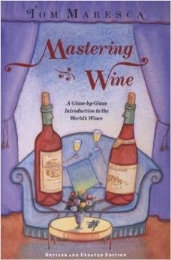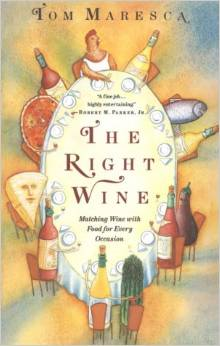This is a post that will hardly be of interest to anyone but me. No pictures, just words. No tasting comments, just thoughts. Anyone not interested can leave now: No offense will be taken.
I’ve been wondering lately about whether it would be possible to put together a case of wines that would enable wannabe winos to learn the world of wine on their own, at their own pace. I myself got hooked on wine long ago by just such a mixed case that a retailer in Baltimore put together for me so I could explore wine.
Of course, the wine world was a lot smaller back then, and very different from what it is now. That case cost about $100, which then was a substantial fraction of my monthly wage, and it consisted, if memory serves, entirely of French wines – because way back then if you wanted to understand wine, wine spoke French. Germany, Spain, and Portugal came up in wine conversation only peripherally, Italy and Austria very rarely, and California was the smallest, remotest blip on the radar. For most American wine lovers, South Africa, Argentina, Chile, Australia, and New Zealand did not exist as wine-producing countries, only as exotic vacation destinations.
I don’t have to tell you that much has changed since then, and genuinely for the better. The wine world is broader and far more diverse now, and field and cellar techniques have improved to such an extent that I can honestly say we’re living in a golden age of wine. We now get good, better-than-drinkable wine from almost every harvest, whereas “back then” one or two of every ten vintages were superior, three or four were OK, and five or six were not worth the drinking.
With all the changes that have occurred, I wondered what would happen today if a naif, as I then was, should walk into a good wine shop and ask a knowledgeable retailer to put together a case of wines to introduce him or her to the world of wine. Phew! Talk about the labors of Hercules: It would be an impossible task. One bottle from each of the principal wine regions of the world would overflow the case. One bottle from each of the principal wine-producing nations would easily fill it – and what kind of introduction to wine would that be, with something like a single Napa Cabernet representing all the wine of the US, or one red Burgundy all of France? No, the task couldn’t be approached that way: The whole question has to be rethought.
Perhaps it could be done by using benchmark wines, great ones that show the heights wine can reach. That, of course, is where cost comes into play. Wine prices, like medical costs and the cost of a college education, have increased at many times the rise in incomes, and many times the rate of inflation, especially in recent years. The present-day equivalent of my 1968 $100 would be approximately $725 now: $725 would merely be a down payment on a single bottle of young Château Margaux. Back then, Margaux and Lafite and such wines – the great Bordeaux first growths – were little more than twice the price of wines like Château Gloria and Château Brane Cantenac, which were included in my introductory case. If memory serves, I’m pretty sure those two then cost under $4 a bottle. So the option of structuring our hypothetical case around benchmark great wines can only be a pipe dream: The cost would be prohibitive for all but hedge fund multimillionaires.
So what about organizing by grape variety? That is, for American wine lovers at least, a very popular approach to wine, so let’s consider it. If we start with white wines, Chardonnay demands inclusion – but its very popularity makes it a difficult choice. Which Chardonnay fairly represents the variety? Burgundy? Chablis? Napa? Sonoma? Long Island? The Finger Lakes? Sicily? Friuli? Oaked, or fermented in stainless steel?
That would be only Wine #1. Suppose we go on to #2: say Sauvignon blanc. From Sancerre or some other spot on the upper Loire? Or somewhere in California or New York? Or Friuli or Alto Adige? And where do we go for Wine #3? Riesling, to be sure – but from the Rhine or Moselle, or from Alsace, or the Pacific Northwest, or Australia, or Austria, or Italy?
Only three grapes considered so far, and you see the dimensions of the problems. And the three varieties I’ve so far mentioned show the still built-in Francophilia of the wine world. We haven’t even considered any of the great white grape varieties of Spain and Portugal, Italy, and Greece. And beyond them, there is the plethora of “lesser varieties” from all these countries and from France, any one of which makes perfectly enjoyable wine. Once we say basta to white wines and move to reds, the problem becomes greater still: Cabernet Sauvignon, Merlot, Pinot noir, Syrah, Cabernet franc, Mourvèdre – or, to break the Francophilia, Aglianico, Nebbiolo, Sangiovese, Touriga nacional, Tempranillo, Nerello mascalese, and maybe even Zinfandel.
It’s an endless task. For that reason, for the past 20 years I’ve resisted all suggestions that I update Mastering Wine. It’s impossible: That book’s format can never be used again, not for anything that pretends to be a thorough introduction to wine. No: There’s only one way that our hypothetical instructive case of wines could be assembled, and it’s by pure subjectivity. An individual could do it, drawing entirely on his or her own knowledge and preferences – making them clear, of course, every step of the way. That could produce a coherent collection, with both scope and focus and even some serious attention to cost control. I’m considering trying it, but it will be a time-consuming job, so stay tuned for developments – but not right away.






